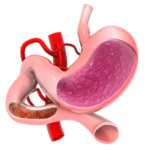Joint pain that shifts from one place to another, for example, starting in the back, then moving to the elbow, and later affecting another joint, is commonly described as migratory or wandering joint pain.
This symptom often points towards autoimmune, inflammatory, or rheumatic conditions and requires careful evaluation. Homeopathy provides a holistic approach that not only relieves pain but also addresses the underlying imbalance in the body.
What is Migratory Joint Pain?
Migratory joint pain, also called wandering rheumatism, is pain and stiffness that moves from joint to joint without settling permanently in one place.
- It may start in the spine or back
- Later shift to the elbow, wrist, or knee
- Pain may be fleeting, variable in intensity, and unpredictable
Common Causes
- Rheumatic Fever – a post-streptococcal autoimmune reaction; classic cause of migratory arthritis.
- Rheumatoid Arthritis (RA) – early RA may present with shifting joint pains.
- Systemic Lupus Erythematosus (SLE) – autoimmune condition with migratory joint involvement.
- Viral Infections – such as Chikungunya, Parvovirus B19, Hepatitis.
- Reactive Arthritis – pain following infections.
- Fibromyalgia or Chronic Inflammatory Disorders.
A proper diagnosis is essential to rule out serious systemic conditions.
Symptoms to Watch For
- Pain shifts from one joint to another
- No permanent joint damage in early stages
- May be accompanied by:
- Fever
- Fatigue
- Stiffness in morning
- Swelling or redness in some cases
Conventional Approach
- Blood tests: ESR, CRP, Rheumatoid factor, ASO titers
- X-rays / Ultrasound for joints
- Pain management with NSAIDs
- Disease-modifying agents in confirmed autoimmune cases
Homeopathic Approach to Migratory Joint Pains
Philosophy
Homeopathy works on the principle of “Like cures Like” and aims to treat the root cause rather than only suppressing pain.
Migratory pains indicate a dynamic disturbance of the vital force, often seen in rheumatic constitutions. Homeopathic remedies are chosen after individualisation — considering not only the joint pain but also the patient’s mental, emotional, and physical state.
Commonly Indicated Remedies
- Rhus toxicodendron – Pain improves with movement, worse at rest; stiffness on first motion.
- Kalmia latifolia – Pains that shift rapidly, often downwards (from upper joints to lower).
- Pulsatilla – Wandering pains, changeable symptoms, relief in open air, suited to mild-tempered persons.
- Colchicum – Severe joint sensitivity, pains aggravated by motion or touch, especially in rheumatic/arthritic constitutions.
- Ledum palustre – Pains that move upwards, joints feel cold, but cold applications relieve.
⚠️ Note: Remedies must be prescribed after a detailed case-taking by a qualified homeopath. Self-medication is not advised.
Lifestyle & Diet Tips for Joint Health
- Stay hydrated and maintain a balanced diet rich in anti-inflammatory foods (fruits, vegetables, omega-3s).
- Avoid excess refined sugar, alcohol, and processed foods.
- Practice gentle yoga, stretching, or walking to improve flexibility.
- Ensure adequate vitamin D and calcium intake.
When to See a Doctor?
- If joint pain persists for more than 2 weeks
- Associated with fever, weight loss, or skin rashes
- Severe morning stiffness or swelling
- Family history of autoimmune disorders




